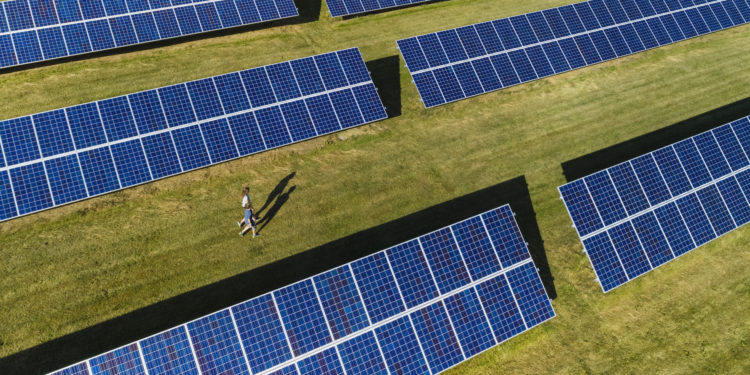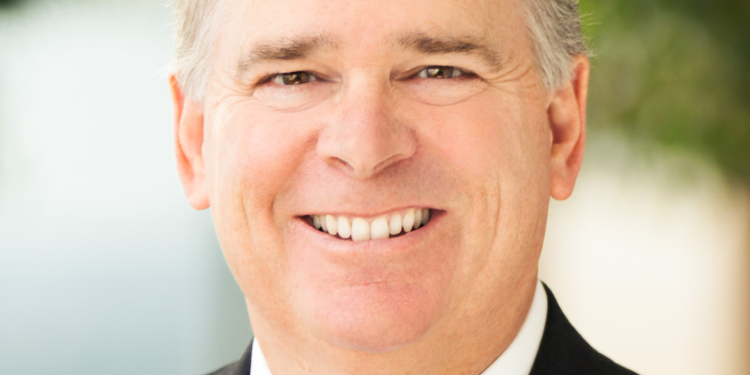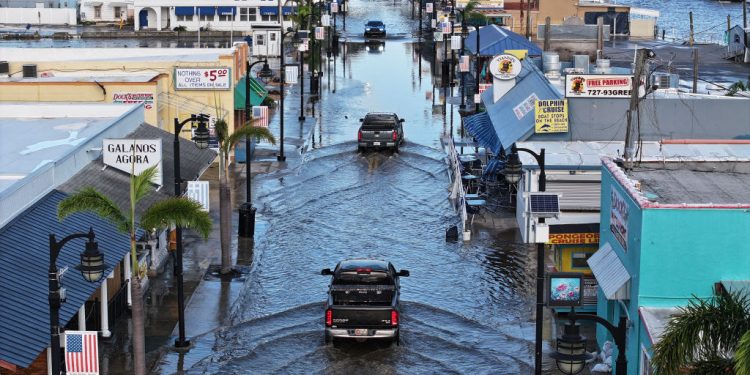Ahead of UN Climate Summit, HP’s CEO Shares Why The Company Is Doubling Down on Sustainability

HP CEO Enrique Lores (HP)
The 26th UN Climate Change Conference (COP26) begins on Oct. 31, and it’s potentially the most consequential of these meetings since the Paris Agreement was reached in 2015. The latest analysis from the UN’s climate science arm shows that global temperature rise is outpacing the Agreement’s aims, which UN Secretary-General António Guterres referred to as a “code red for humanity.” Corporate leaders and heads of governments around the world are mobilizing, and HP CEO Enrique Lores has shown that good climate policy can also be excellent for business. It’s why we invited him as the guest of our latest JUST Quarterly Call on Tuesday, in which we break down how a company is delivering long-term value through a stakeholder lens.
Ahead of the call, HP announced a major expansion of its partnership with the World Wildlife Fund (WWF) to conserve and restore global forests. The Palo Alto-based company will spend $80 million over the next five years to help offset the impact of printing with its products, ultimately restoring or protecting nearly one million acres of forest. The move is just the latest show of HP’s commitment to sustainability under Lores’ leadership.
With a commitment to be “the most sustainable and just technology company,” HP has prioritized sustainability and stakeholder performance while delivering for shareholders. HP’s 2020 Sustainability Impact Report noted that its sustainable impact agenda helped it win more than $1 billion in sales for the second year in a row. With a market cap of nearly $35 billion, HP’s latest earnings also show it is projected to continue to grow at a pace ahead of its industry peers.
This focus landed HP the number two spot among technology hardware companies for its shareholder performance in our 2021 Rankings of America’s Most JUST Companies. Within its industry, HP also ranked third for how it takes care of the environment and its communities and sixth for how it treats its 53,000 employees. We wanted to unpack those numbers with Lores, and, as COP26 nears, learn more about how HP’s approach to sustainability has been a boon for business. JUST CEO Martin Whittaker joined him for our latest Quarterly JUST Call to discuss.
Watch the full conversation here and read on for key takeaways.
Tie climate targets to core business outcomes
Speaking on HP’s commitment to fighting climate change, Lores raised that the company is focusing on both overall targets and ones tied to key business areas. Overall, HP is committed to reaching net-zero greenhouse gas emissions by 2040, but the company has set other goals that are closer to core areas of business. Lores pointed to the negative environmental impact of printing as a key example. With an aim to make printing “forest positive,” the company started an initiative to fight deforestation, forming the foundation for its new partnership expansion with WWF, Lores said.
Lores also spoke on HP’s new sustainability bond framework, designed to help the company issue bonds to help finance sustainability-related projects, as a way of marrying climate targets with core business and shareholder interests. When announcing the framework, HP also issued its first $1 billion sustainable bond to positive reception from financial institutions, Lores noted. “Clearly even financial institutions are willing to put their money behind helping us make progress, which I think is an important sign of how the world is changing in the right direction,” he said.
Get specific and look to board leadership in DEI efforts
HP’s approach to diversity, equity, and inclusion (DEI) has been informed by a similar mindset, Lores noted. He pointed to the growing evidence that diverse teams lead to better business outcomes as motivation for the company’s commitment and also emphasized the importance of specifics in HP’s DEI goals. “We are a company of engineers that likes to put specific and numeric goals to everything we do,” he said. HP’s DEI goals include having women comprise at least half of its executive leadership team and at least 30% of its engineering workforce by 2030, and doubling the number of Black employees in executive leadership roles in the U.S. by 2025.
Setting these specific goals has allowed HP to more easily track progress, Lores said, and the company’s already seen the benefit of prioritizing DEI play out at the board level. Referring to its board as “one of the most diverse in corporate America,” Lores noted that the discussions this group is able to have has led to better business plans and strategies for HP. The board has been particularly involved in HP’s ESG efforts, he said, helping push the company on both impact and shareholder return.
Address the holistic impacts of products and services
HP is not only addressing the environmental impact of its products, but the way they may have contributed to the digital divide around the world. For the company, that looks like both ensuring more people can access its technologies and that this access leads to better life outcomes for individuals. While HP has set an overarching goal to accelerate digital equity for more than 150 million people by 2030, it also runs programs focused on training and content people can use to start new businesses and achieve other goals that help evolve their lives, Lores said. And while HP’s goal may sound aggressive, Lores noted it’s a small dent the company can make given the billions worldwide who are disconnected.
Leverage the amplifier effect of your supply chain
What underpins all of HP’s sustainability agenda is its focus on leveraging relationships with suppliers and other business partners. “Every year we produce close to 100 million PCs. We produce 50 million printers. This is of great scale that we can use for the good of the planet,” he said. Lores frames HP as both a community, in that internally it needs to live up to its values and principles, and a platform, given the scope of its partners and suppliers. HP’s developed requirements for suppliers around diversity and environmental metrics as well as a new program, Amplify, to help partners develop their own sustainability agendas, Lores noted.
For Lores, HP’s sustainability approach is, importantly, further proof that shareholders are not an afterthought in stakeholder capitalism, saying that it’s a false dichotomy to say you have to “choose between business performance and having an impact in the world.”
“Our results show that doing both at the same time is possible,” he said.
CNBC Squawk Box: Semiconductor Shortages and ESG
Ahead of the Quarterly JUST Call, Lores joined Andrew Ross Sorkin on CNBC’s Squawk Box to discuss the current global supply chain and semiconductor shortages along with HP’s approach to ESG and its sustainable products. You can watch the full interview below.






